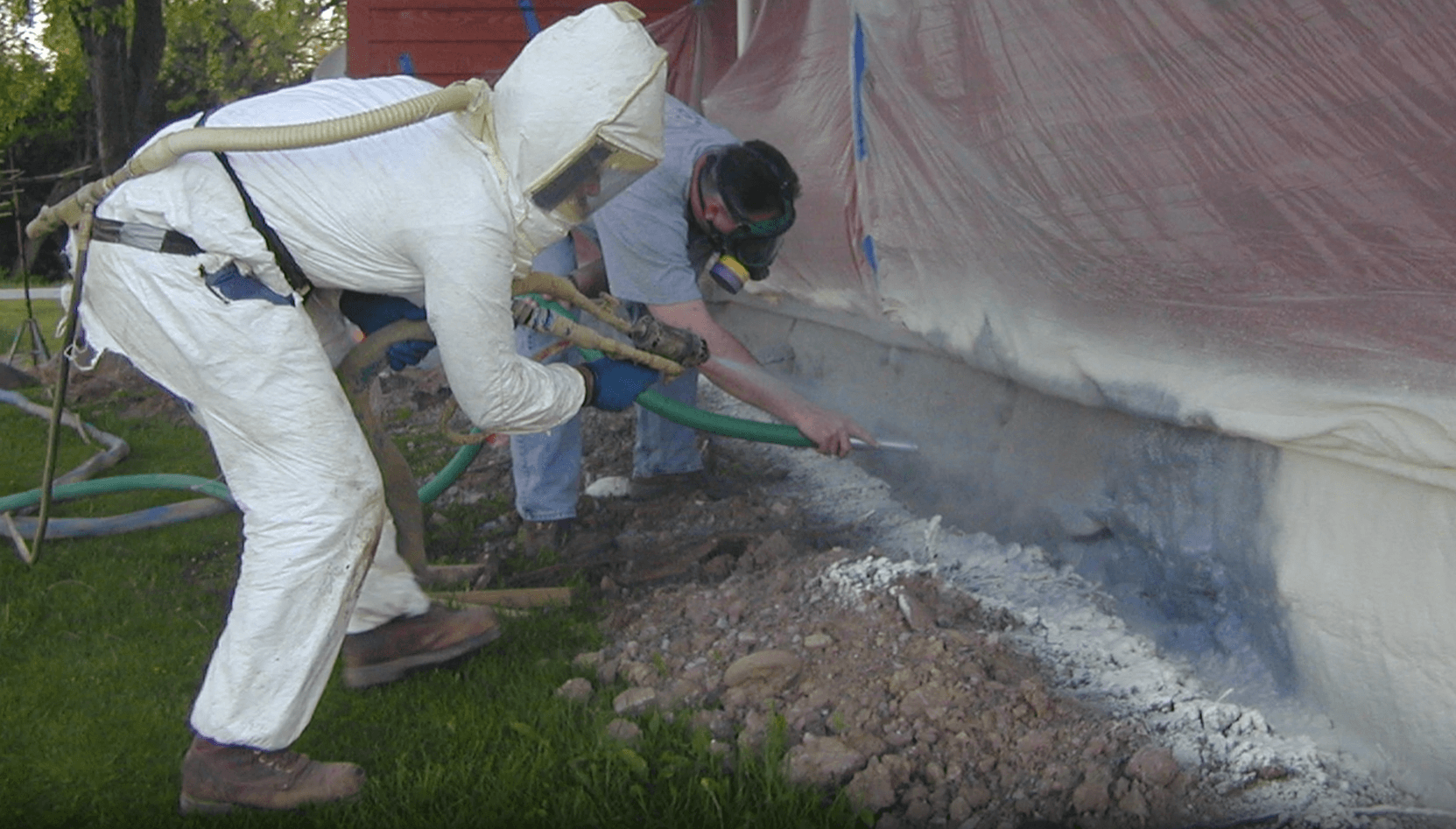What Contractors Need to Know About Spray Foam R-Values

Understanding R-Value isn’t just about knowing the numbers—it’s about how those numbers translate to real-world performance for energy efficiency, comfort, and durability.
Whether you’re an experienced spray foam contractor or just starting in the industry, a firm knowledge of R-Value is essential for optimizing your installations and meeting your customers’ expectations.
What Is R-Value?
At its core, R-Value measures the spray foam’s ability to resist the transfer of heat. The higher the R-Value, the better the foam insulates. Think of it as the “stopping power” for heat trying to pass through walls, floors, or ceilings.
For spray foam professionals, the R-Value is a critical indicator of how well a space will retain heating in the winter and cooling in the summer. You should be using this metric to evaluate insulation products and ensure your projects meet energy efficiency goals.
Why R-Value Matters in Foam Insulation
R-Value is the foundation of effective insulation. It influences energy efficiency, compliance with regulations, and client satisfaction, whether you’re working on a residential or commercial building,
Energy Efficiency
One of the biggest selling points of high R-Value foam insulation is its impact on energy efficiency. Simply put, higher R-Values mean less heat transfer, which translates into lower energy bills for your customers.
Highlighting energy efficiency is an easy way to showcase the value of spray foam and differentiate your services. Clients want insulation that pays off over time, and R-Value is an easy way to prove that it’s a worthwhile investment.
Code Compliance
Building codes and energy regulations often require minimum R-Value requirements based on the building’s location and purpose. Understanding R-Values and ensuring projects meet or exceed the specifications can prevent fines, delays, or retrofits and build your credibility.
Customer Satisfaction
While your clients don’t always understand the technical aspects of insulation, they do care about making informed decisions. As a contractor, you have the opportunity to educate them about R-Value and its benefits. When customers feel confident in your knowledge and transparency, they’re more likely to choose premium options and recommend your business to others.
Understanding Spray Foam Insulation R-Value
Not all spray foam is created equal. The type of spray foam — whether open-cell or closed-cell spray foam — results in distinct R-value ranges. There are also several factors that influence the foam’s performance.
Open-Cell vs. Closed-Cell Spray Foam Insulation
By understanding the R-Value differences and properties of open-cell and closed-cell spray foam, you can find the right solution for specific project needs.
Open-cell foam typically has an R-value of R-3.5 to R-3.8 per inch. Open-cell spray foam is lighter and less dense, making it a great option for applications where air sealing, soundproofing, and affordability are priorities. Such as interior walls, floors and attic bases..
On the other hand, closed-cell spray foam has an R-value range of R-6 to R-7 per inch. It’s one of the highest-performing insulation materials available. The high density and rigidness of the closed-cell foam makes it a great option for exterior walls, basements, and attic exterior.
Factors That Shape R-Value Performance
Achieving the expected R-Value with spray foam insulation depends on application techniques, thickness, and environmental conditions.
Application Techniques
Proper spray foam application techniques help ensure consistent insulation coverage and prevent gaps or weak spots that compromise performance. You may have to do multiple passes to reach the desired thickness, especially with closed-cell foam.
Thickness
R-Value generally increases with thickness — but only up to a point. After a certain thickness, you get diminishing returns. Exceeding manufacturer recommendations can lead to improper curing or waste material.
Environmental Conditions
Spray foam is sensitive to temperature and humidity, which means the weather and environment play a significant role. Suboptimal conditions and cold weather can affect curing, adhesion, and overall thermal resistance. Make sure to prepare surfaces and properly adhere to environmental guidelines to maintain the foam’s expected R-Value.
Partner With Oak Ridge for Your Spray Foam Needs
From providing high-quality spray foam products to offering expert guidance on R-Value considerations, the team at Oak Ridge Foam & Coating Systems, Inc. has your back. We have the tools and knowledge to help you tackle any insulation project with confidence.
If you’re ready to take your insulation jobs to the next level, we’d love to chat. Let’s work together to deliver insulation solutions that exceed expectations—every time.
[button link=”https://oakridgepoly.com/contact-oak-ridge-foam-and-coatings/” color=”green”] Contact Us[/button]
